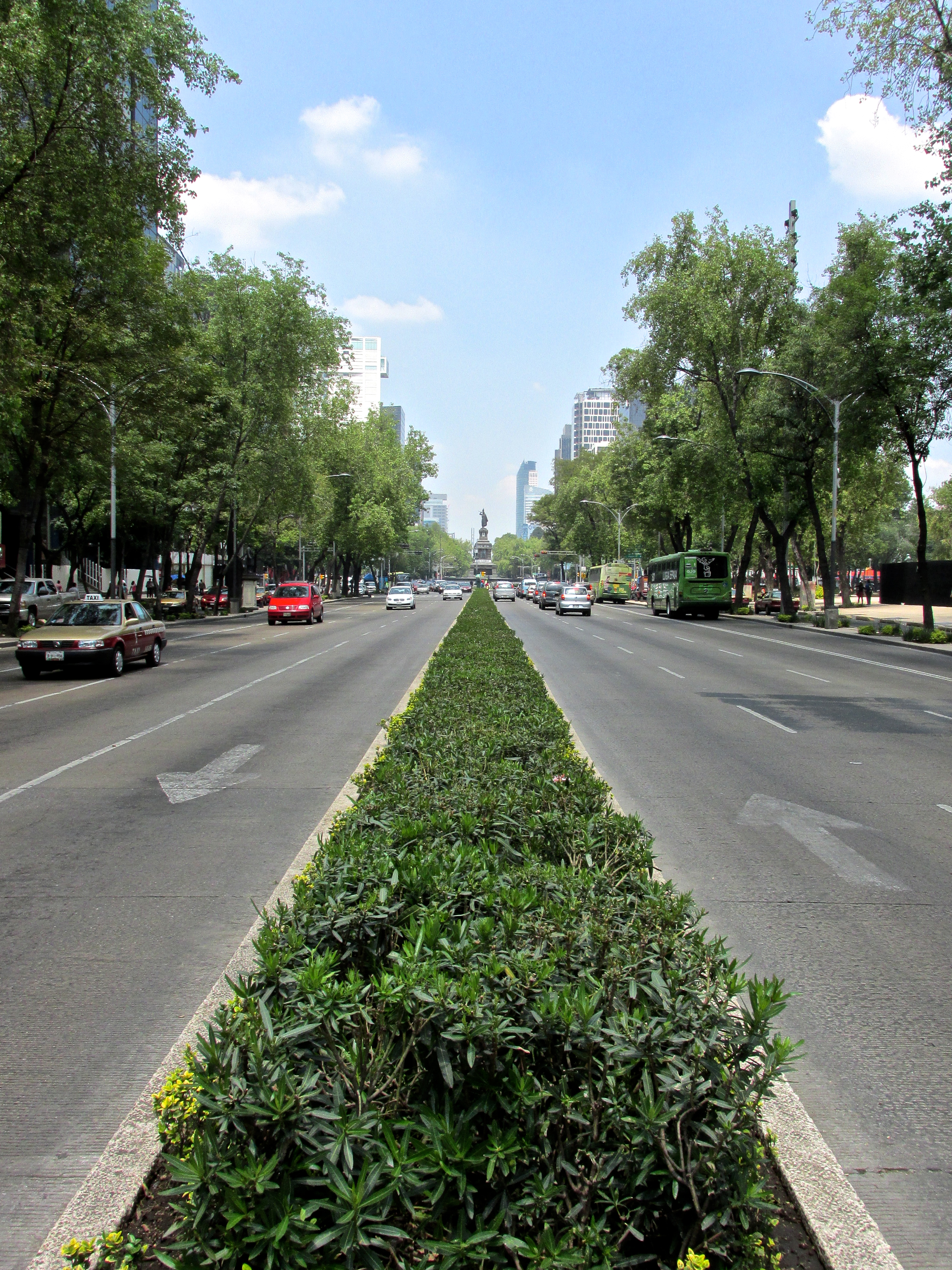
BY CAROLINE ROUSE
In the dark, on the curb outside Puerta Tres, one pair of headlights after another looped by to pick up passengers. It was 5:45 in the morning. I cast my eyes toward the concrete and leaned on a metal luggage cart. The sun would not rise over Benito Juárez International Airport for at least another hour.
“¿Carolina?” I glanced up to see a man motioning out the window out of a steely blue Dodge Stratus. “¿Eduardo?” I asked. He nodded and opened the door to help me with my bags, the first person I met in Mexico.
“You must be tired. I’ll have you there soon,” Eduardo assured me in Spanish. I slid quickly into the front seat. A small hand-carved cross dangled from the rearview mirror on a knotted white cord. It swung to one side we turned onto the highway that circles the sprawling city. I was surprised to see there were already cars in every lane, but Eduardo did not seem bothered. “This is not traffic,” he told me. “At about 8 in the morning, then it will get heavy.”
Mexico City traffic is infamous. With a population hovering at 22 million, individual trips to work, school, or the market add up to standstills in the streets. The Sistema de Transporte Colectivo, the public transportation system of buses and subways, is among the cheapest in the world: a “boleto” for one subway ride costs 3 pesos, or less than 25 cents. Yet these systems overflow. During peak commuter hours, there are even separate buses and subway cars for women and children to prevent uncomfortable situations and abuse.
“For people who are not used to it, of course it is frustrating,” Eduardo said, weaving expertly from one lane to the next. “For me, it is part of the job.”
Eduardo’s father was a driver for 37 years, known for singing in the car for his clients. Eduardo started taking care of his father’s clients when he was 26 years old. Now he is 41, with his own team of drivers.
“I am in the car driving for 8 hours a day, minimum,” Eduardo explained. “Some days, it can be 15 or 16 hours. Some nights, I don’t get home until after 1 or 2 in the morning.” It was hard to imagine Eduardo in his blue dress shirt, sitting in the car for so many hours, steaming in the thick, humid Mexico City air.
Air quality was once a crisis in Mexico City. In 1992, the city’s air quality was ranked the worst in the world by the United Nations, but today it does not even rank in the top 10 on that list. In about 20 years, Mexico City has cut its air pollutants in half. This progress was achieved through expansion of the subway, which laces the city with 125 miles of track, initiatives like EcoBici, a bicycle sharing program, and One Day without a Car, a program that assigns all cars in the city one weekday on which they cannot circulate. In 2013, Mexico City received the Sustainable Transport Award from the Institute for Transportation and Development Policy.

We turned off the highway and onto Paseo de la Reforma, in the heart of Mexico City. “Of all the principal avenues, Reforma is my favorite,” Eduardo told me.
Reforma’s wide lanes stretch toward the bristling greens of Chapultepec Park, and all along the avenue glistening corporate headquarters stand in contrast to historic statues. Eduardo named the monuments as we passed: the last Aztec emperor Cuauhtémoc, the Ángel de la Independencia, the huntress Diana, the towering bicentennial Estela de Luz. He pointed out his favorite sushi place and a coffee shop, sheltered by a bright awning.
We turned onto a narrow side street and stopped in front of a simple glass door in lingering darkness. “Ahora llegamos,” Eduardo announced. We had arrived.
Technically, I entered the country when “Estados Unidos Mexicanos” was pressed into a back page of my passport in bright green. But putting a stamp in a passport does not convey a sense of place. Truthfully, I arrived as I listened to Eduardo describe his city.
“My family is here, my work is here,” he said. “I cannot imagine my life anywhere else.”
“What would make Mexico City better?” I asked.
For the first time in our conversation, Eduardo paused. “To make Mexico City better? This question is sort of impossible, no?”
Caroline Rouse ’15 is in Pierson College. This summer she is blogging from Mexico City. Contact her at caroline.rouse@yale.edu.